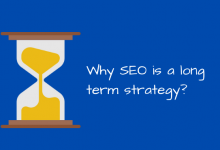Which bidding strategy to use with Google Ads?

Manual CPC, maximize clicks, maximize conversions, outranking rate, target CPA. There are a number of bidding options within Google Ads. But which Google Ads bidding strategy should you choose? And at what point in the term should you switch bidding strategy? In this article, I’ll take you through the 8 most commonly used bidding strategies within Google Ads, with target CPA and target ROAS as essential strategies when it comes to getting the most out of your budget based on conversion data. You can also read more about other, less used strategies at Google’s support.
Table of Content
1. Manual CPC
Manual CPC stands for cost per click. You can manually set your maximum price for the cost of an ad click. I use this method a lot at the start of the campaign. You have full control of the maximum click amount per search term used. For example, if you place an ad and you have set a maximum CPC of 0.25 euros, you will never pay more than this amount for a click. Often the actual spend is less than the maximum click amount you have set. It has to do with the ranking. For example, if you are in number one and your competitor in second place pays 0.19 euros for a click, then you pay 0.20 euros at that time to maintain your number one position.
2. Improved CPC
The improved CPC is in line with manual CPC, where the manual bids you set earlier are automatically adjusted for clicks that are likely (higher bid) or not (lower bid) to lead to a conversion (such as a quote request, a download of a whitepaper or a sale in a webshop). This bidding strategy already uses the smart signals from Google Ads (conversion data). For the Search Network, Google Shopping, and Hotel campaigns, you need to set up conversion tracking to take advantage of this bidding strategy. It is not necessary for campaigns in the Display network, but it does offer you more insight.
Also Read: How much does Google Ads cost?
3. Outreach percentage
I hardly use this bidding strategy myself. However, when the situation calls for it, you can of course apply this bidding strategy. With this strategy, you can compete with a competitor, where you can specifically indicate in what percentage of the auctions you want to be above this competitor in the search results. It’s a real competitive strategy.
4. Target Impression Share
With this (smart) strategy you can choose which position you will be in:
- The absolute top position on the first page
- Top of the page
- Somewhere on the page in the search results
With this bidding strategy, you can set a maximum bid price per click. You can also choose a percentage at which you want the impressions in a certain part of the search results. For example, in 25% of the auctions, you want to be in the absolute top position with your campaign.
This bidding strategy certainly sounds very enticing. However, I advise you to take a good look at your objectives and the return. When you measure conversions and you have a clear idea of the maximum costs you want to make for a conversion, it is better to choose a different strategy.
Also Read: Types of Keyword options in AdWords
5. Maximize Clicks
If you want to generate as much traffic as possible to your website within a certain budget, you can choose this bidding strategy. If you have a maximum daily budget and you actually always reach the limit, this option is fine to apply. This option also comes in handy if you are doing an AB test and you want to collect a lot of data quickly.
6. Maximize Conversions
If you have a fixed budget and you want Google’s algorithm to help you achieve as many conversions as possible, then this is the right bidding strategy. However, if you want to grow as a company and you see that your ROI is correct, then this strategy is not immediately the best option. Target CPA or Target ROAS can give you much more return.
7. Target CPA
This commonly used, smart bidding strategy works quite simply, actually. You indicate how much you want to pay for a conversion (Cost Per Acquisition). This bidding strategy uses the conversion data from the past. In this way, you can work towards a price that you are willing to pay per conversion. I myself use this strategy as a next step when I started with manual CPC and I want to see if I can achieve a lower cost per conversion with target CPA.
8. Target ROAS
This bidding strategy in Google Ads is also popular. It means how much your ROI should be per dollar spent. If your goal is to convert 4 euros per euro, then your target ROAS is 400%. Based on the available conversion data from the past, Google will automatically set the bids to maximize the conversion value in the ratio of 1:4 (spend vs. revenue).
Google Ads then automatically sets your max CPC bids to maximize your conversion value while aiming for your target ROAS of 500%.
Get started with Google Ads
Do you work with Google Ads for your company and do you want to take the next step in optimizing your campaigns? Then get started with these bidding options. If you can’t figure it out and need help, please contact me. I’d be happy to help you on your way.




